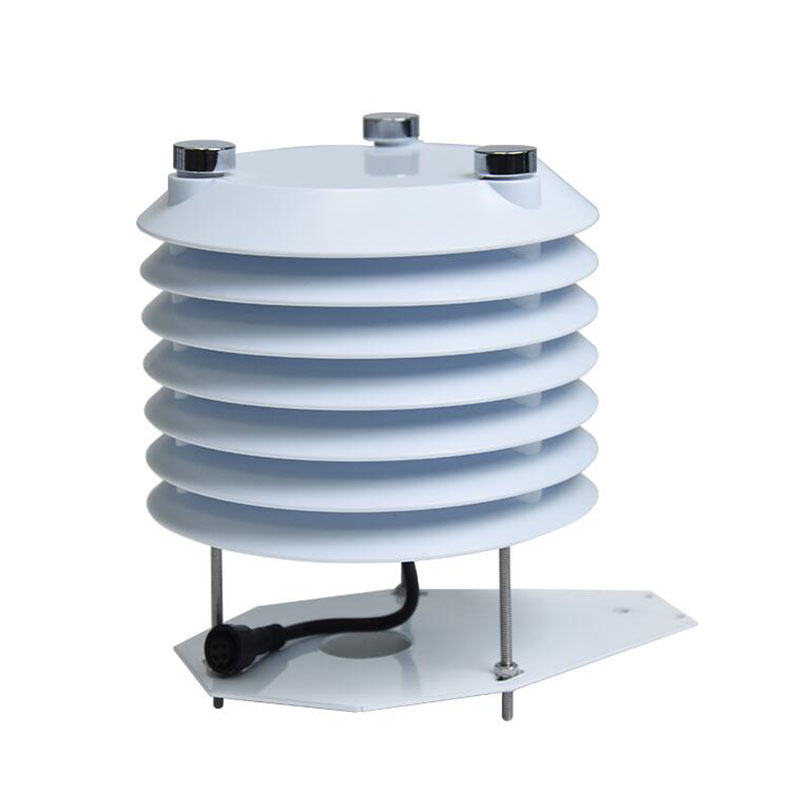Shandong Fengtu IOT Technology Co., Ltd
Sales Manager:Ms. Emily Wang
Cel,Whatsapp,Wechat:+86 15898932201
Email:info@fengtutec.com
Add:No. 155 Optoelectronic Industry Accelerator, Gaoxin District, Weifang, Shandong, China

Sales Manager:Ms. Emily Wang
Cel,Whatsapp,Wechat:+86 15898932201
Email:info@fengtutec.com
Add:No. 155 Optoelectronic Industry Accelerator, Gaoxin District, Weifang, Shandong, China
time:2025-11-28 09:12:20 source:Weather Station viewed:8 time
Air quality sensor is a device used for real-time monitoring of air pollutant concentrations and environmental parameters. Widely applied in environmental monitoring and public health, it can detect multiple parameters such as PM2.5, PM10, carbon monoxide, sulfur dioxide, nitrogen dioxide, and ozone, helping to assess levels of harmful gases and smog, supporting data-driven decision-making and health protection measures.
Air quality sensor is a device specifically designed for real-time monitoring of air pollutant concentrations and environmental parameters. Through built-in sensing technology, it continuously collects data to assess air quality conditions. These devices play a crucial role in environmental monitoring and public health, helping to identify pollution sources and providing scientific basis for policy making and public health interventions. In practical applications, Air quality sensor typically integrates multiple detection modules, allowing it to simultaneously measure various parameters, such as particulate matter and gaseous pollutants.
The core function of this device lies in detecting key pollutants in the air, including fine particulate matter such as PM2.5 and PM10. These particles may originate from industrial emissions or vehicle exhaust and pose potential risks to the human respiratory system. The sensors also monitor gaseous pollutants such as carbon monoxide, sulfur dioxide, nitrogen dioxide, and ozone. Carbon monoxide is usually associated with incomplete combustion processes, and high concentrations can lead to oxygen deprivation; sulfur dioxide and nitrogen dioxide mainly come from the combustion of fossil fuels and can cause acid rain and respiratory diseases; ozone is often formed in photochemical reactions and has complex effects on the environment and human health. The advantage of multi-parameter Air quality sensor lies in its comprehensiveness, allowing simultaneous assessment of multiple harmful substances, thus providing a more comprehensive picture of air quality.
In the field of environmental monitoring, Air quality sensor is widely used in urban air quality stations, industrial areas, and nature reserves. Through real-time data transmission, they help monitoring networks track pollution trends and provide early warning information to environmental management departments. For example, during periods of high smog, sensor data can be used to issue health warnings, reducing the public's risk of exposure to highly polluted environments. Furthermore, these devices play a key role in public health, for example, by being deployed in hospitals, schools, and communities to assess indoor and outdoor air quality and prevent the spread of respiratory diseases. Through long-term data accumulation, the sensors can also support epidemiological studies, analyzing the correlation between pollutants and health problems.
In addition to traditional environmental monitoring, Air quality sensor is also applied in industrial safety and home environments. In industrial settings, they are used to detect leaks of harmful gases in the workplace, ensuring employee safety; in homes, small sensors can be integrated into smart home systems to monitor indoor smoke and volatile organic compounds, helping residents take ventilation or purification measures. This wide applicability stems from the flexible design of the sensors, including portable and fixed models, with monitoring ranges customizable according to needs.
Overall, Air quality sensor, as an efficient tool, not only improves the accuracy of environmental data but also supports sustainable development goals. With technological advancements, future sensors may integrate more intelligent functions, such as IoT connectivity and data analysis algorithms, to enhance real-time response capabilities. However, their core value will always lie in providing a reliable data foundation to help society address air pollution challenges and promote public health and ecological balance. Through continuous innovation and application, these devices will play an increasingly important role in global environmental governance.

ambient weather lightning detector detects lightning within 15KM of your location and accurately detects lightning strikes....
The Ultrasonic Wind Velocity and Direction Meter is a modern wind measurement device whose main purpose is to measure wind speed and direction. It uses ultrasonic technology to accurately measure wind speed and direction, and also has the advantages of fast response, no calibration and easy installa...
An ultrasonic wind speed and direction meter is a device that uses ultrasonic technology to determine the speed and direction of wind. It can be used in field environments, as well as indoors for inspection and maintenance work on buildings, and for determining meteorological parameters. Its sensor...
Early summer is so beautiful, the breeze, wheat waves rolling, full of hope for a good harvest. Farmers sweat hard for a good harvest, to use science and technology to guard food security oh!For example, the temperature and humidity sensor chip to help grain monitoring for many years, intelligent gr...